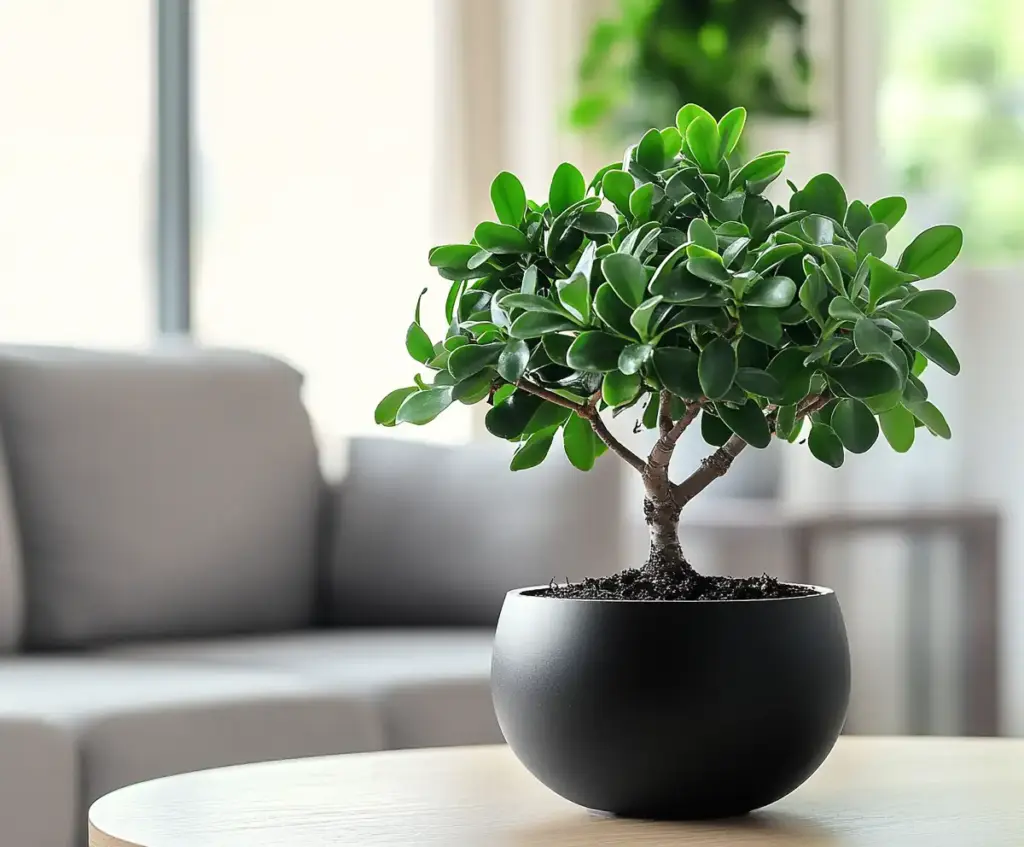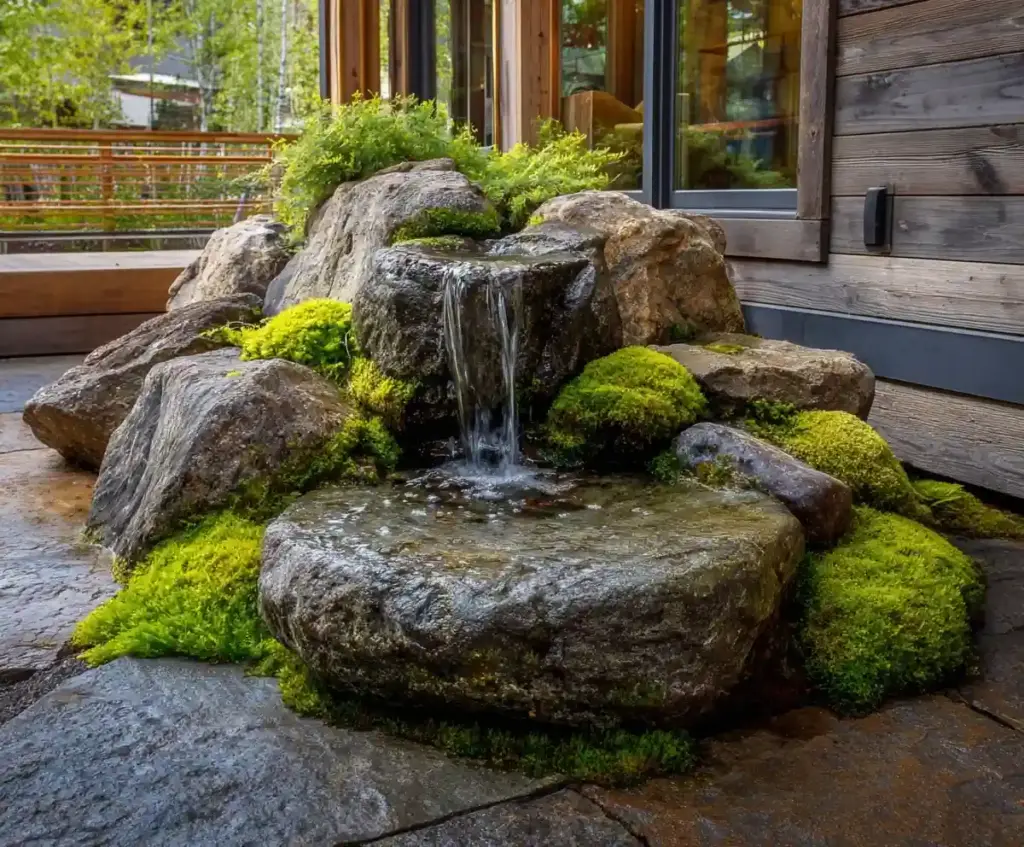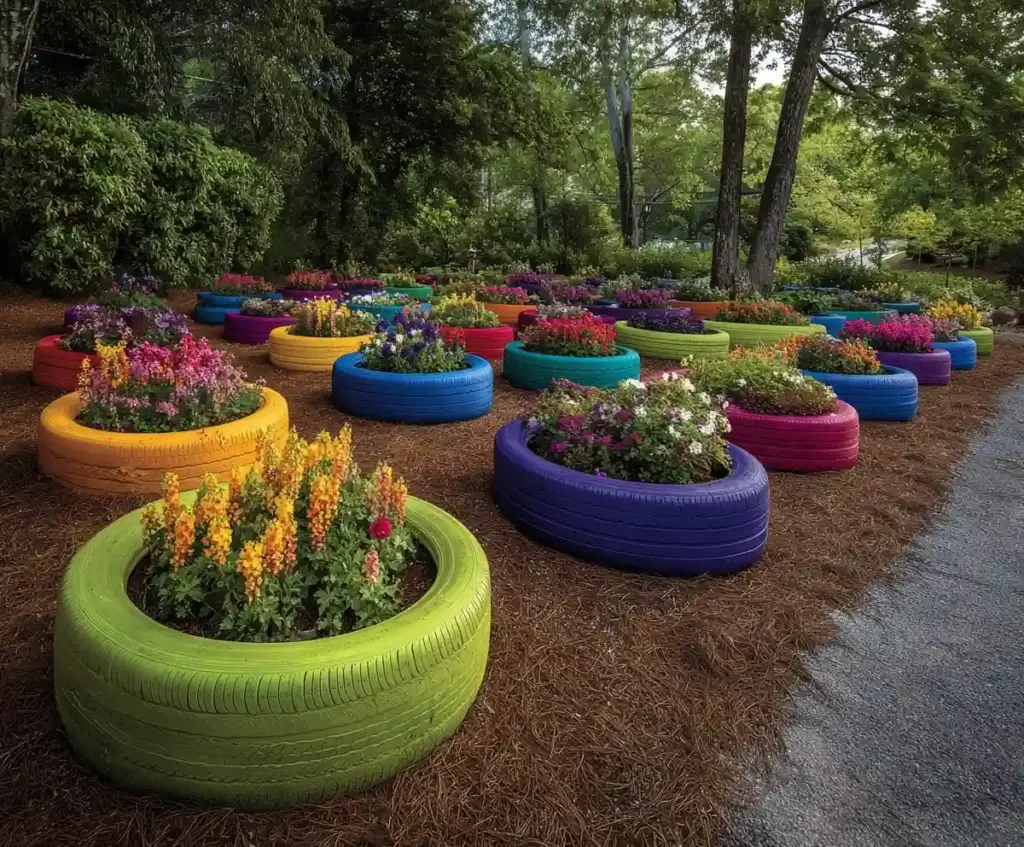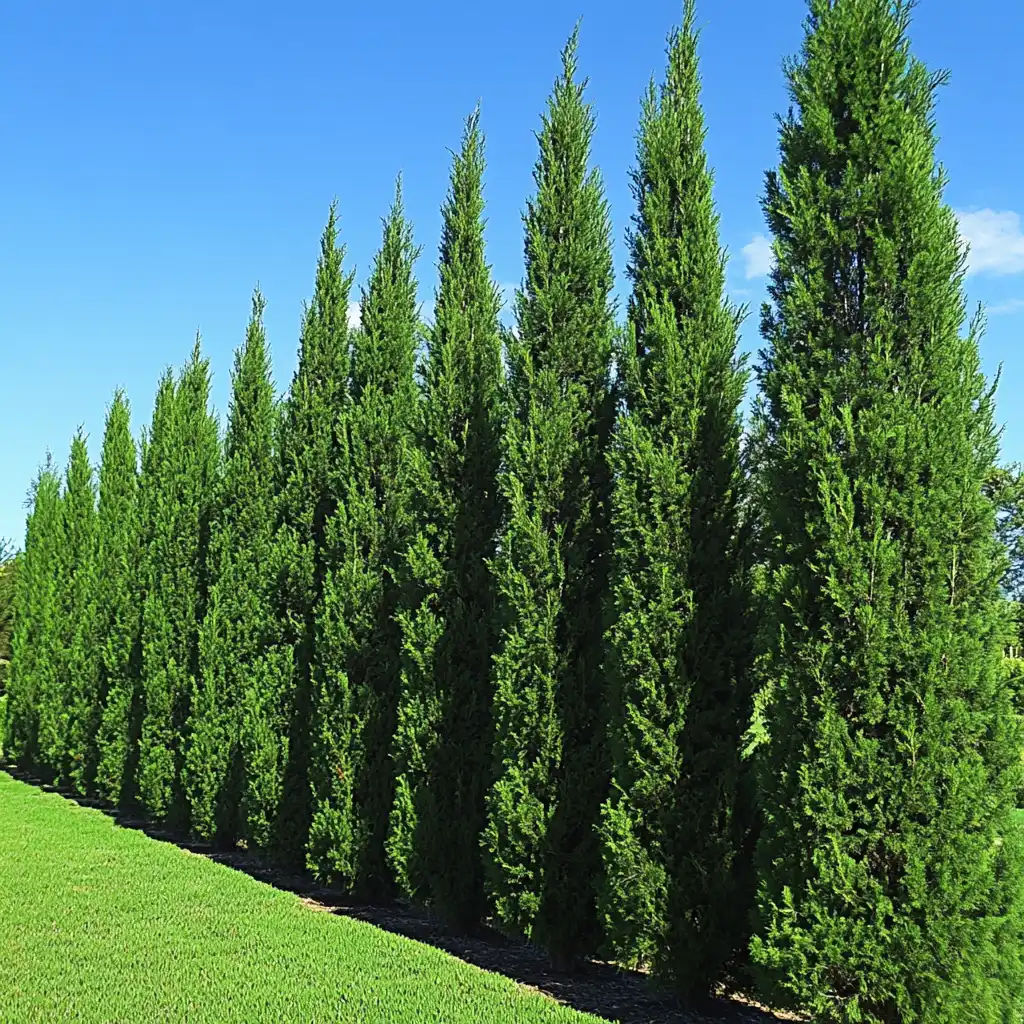Privacy trees along fence lines are not only one of the most effective solutions for backyard seclusion—they’re also among the most beautiful. When my family moved into a vibrant suburban neighborhood, we initially enjoyed the openness of our new yard. But it didn’t take long to notice just how exposed our space really was. Whether enjoying a quiet cup of coffee or entertaining guests, we found ourselves wishing for a more private, peaceful atmosphere.
Rather than installing a tall, impersonal wooden fence, we chose a greener alternative: planting fast-growing privacy trees. These trees gave us the privacy we needed, while also enhancing the landscape with texture, seasonal color, and wildlife appeal. Within just a couple of years, what was once a wide-open yard became a lush, serene escape.
If you’re also hoping to shield your yard from view while boosting curb appeal, you’re in the right place. In this guide, we’ll walk through 15 excellent tree choices that grow quickly and thrive along fence lines. And if you’re planning a full garden makeover, be sure to check out our cheap backyard renovation ideas for cost-effective upgrades or explore the best shrubs for the front of your house to complete your landscaping vision.
Table of Contents
15 Fast-Growing Trees for Privacy
Looking to plant privacy trees along the fence that fill in quickly and offer year-round coverage? These fifteen options are ideal for creating lush, green barriers that shield your yard from view and add visual appeal.
1. Leyland Cypress
Growth Rate: 3–5 feet/year
Why It Works:
This classic privacy tree is a favorite for good reason. It shoots up fast, forms a dense wall of evergreen foliage, and offers reliable year-round coverage. Leyland Cypress is perfect for larger spaces and creates an almost instant screen once established.
- Ideal for full privacy in 2–3 years
- Withstands wind and moderate drought
- Works best when planted 5–8 feet apart
2. Thuja ‘Green Giant’
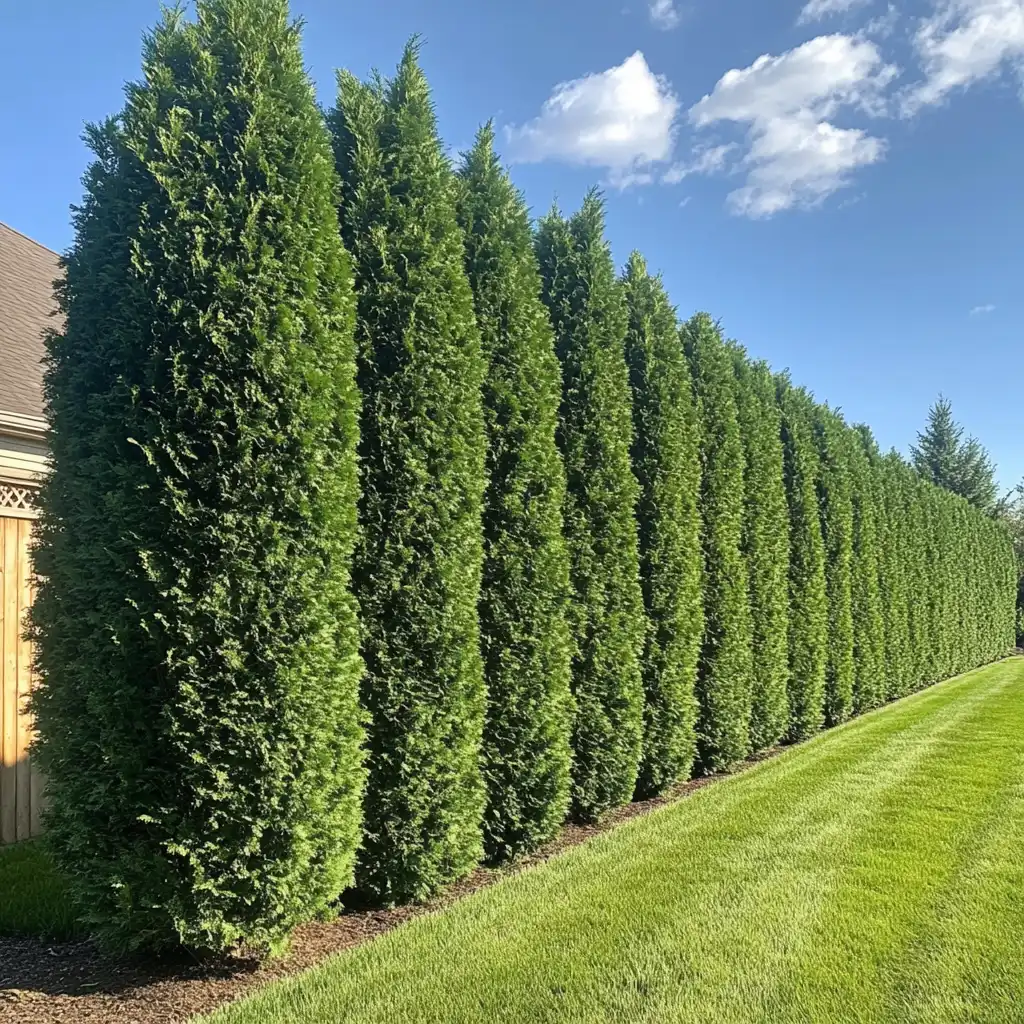
Growth Rate: 3–5 feet/year
Why It Works:
If you’re after low-maintenance privacy trees along a fence, Green Giant delivers. It’s tolerant of different soils, stays lush through all seasons, and grows tall without crowding.
- Excellent alternative to Leyland Cypress
- Forms a thick green “living wall”
- Pest and disease-resistant
3. Eastern Red Cedar
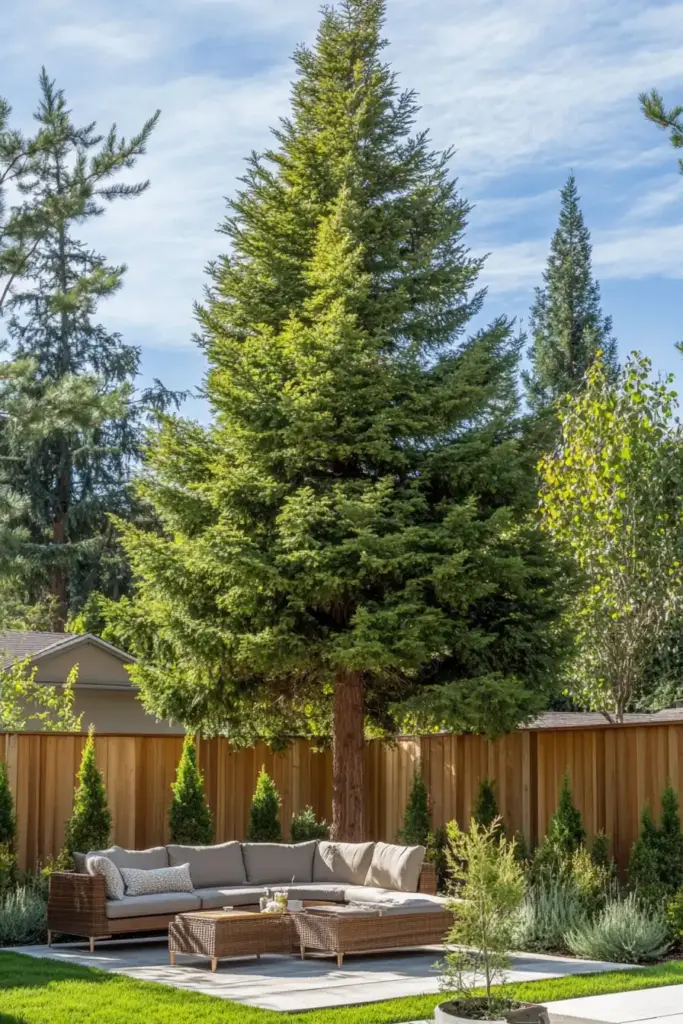
Growth Rate: 1–2 feet/year
Why It Works:
While slower than some, this native evergreen offers tough, dependable privacy. It’s especially good in drier climates or poor soil conditions.
- Great for year-round coverage
- Attracts birds with its blue berries
- Naturally deer-resistant
4. Arborvitae ‘Emerald Green’
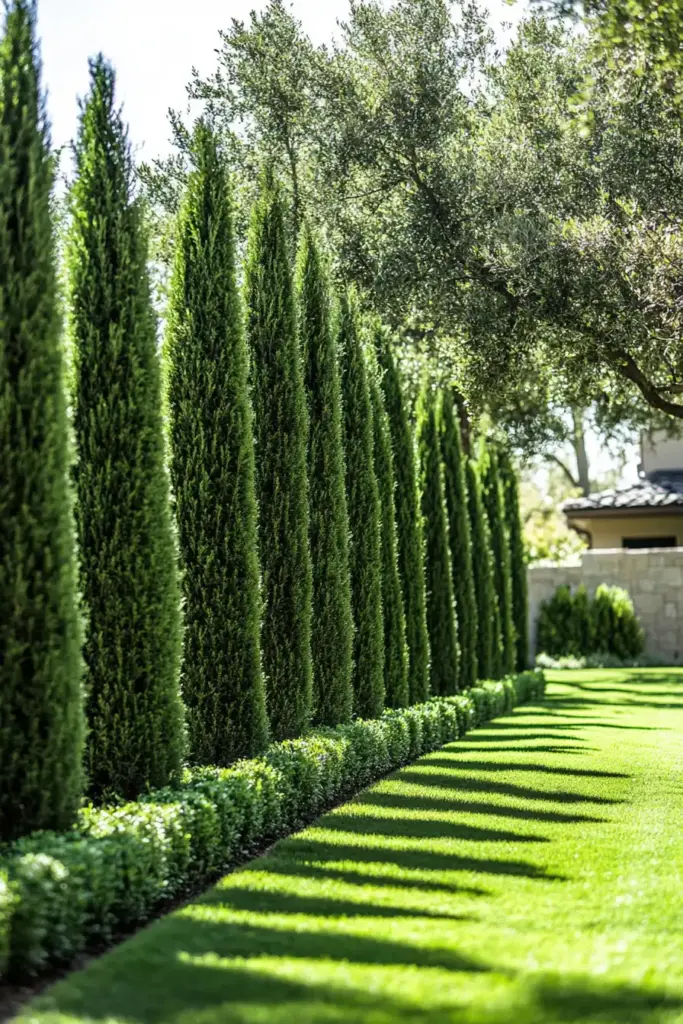
Growth Rate: 1–2 feet/year
Why It Works:
Perfect for tight suburban lots, these slender evergreens stay upright and compact. Use them as privacy trees along fences where space is limited.
- Narrow profile for small yards
- Requires minimal pruning
- Holds vibrant green color in winter
5. Clumping Bamboo
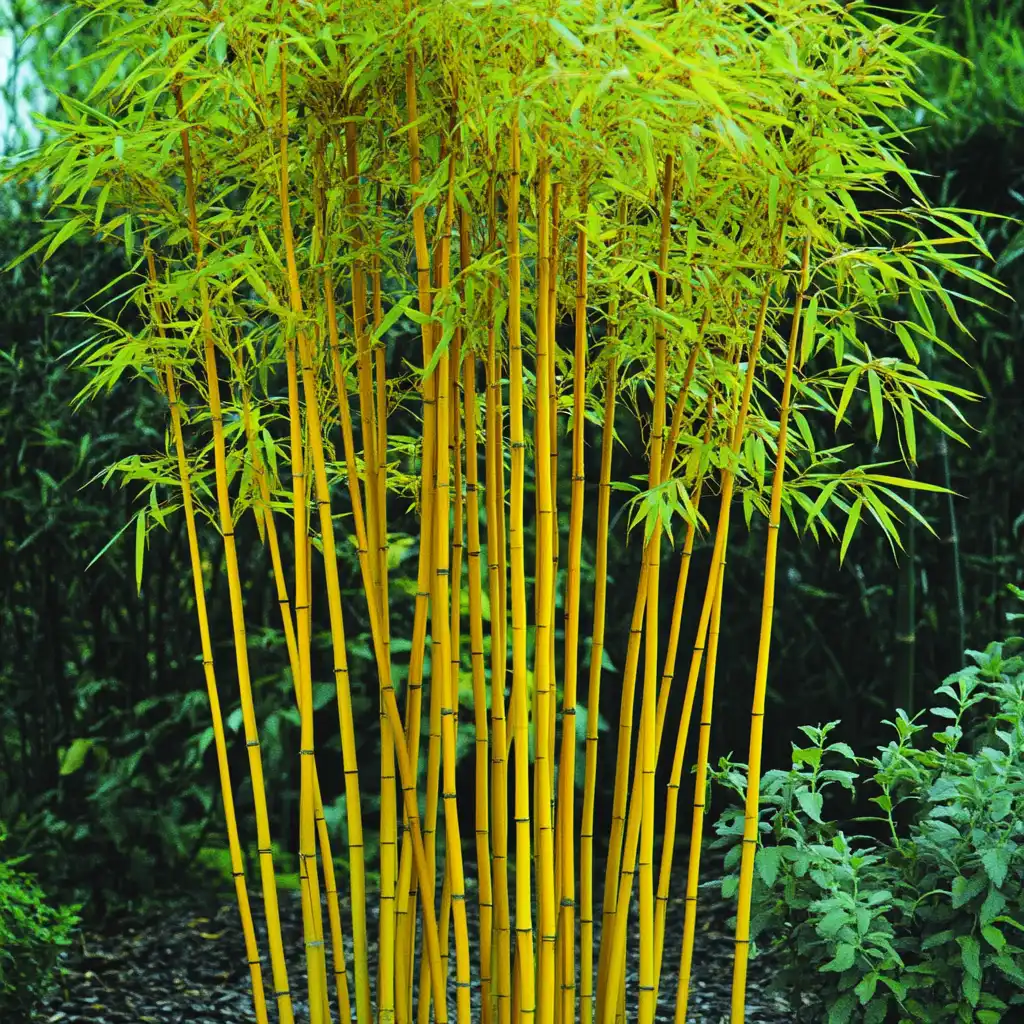
Growth Rate: 3–5 feet/year
Why It Works:
Want privacy with a tropical twist? Clumping bamboo grows fast, but unlike running varieties, it won’t invade your garden.
- Great for modern or Zen-style gardens
- Non-invasive and easy to control
- Makes a soft rustling sound in the breeze
6. Hybrid Poplar
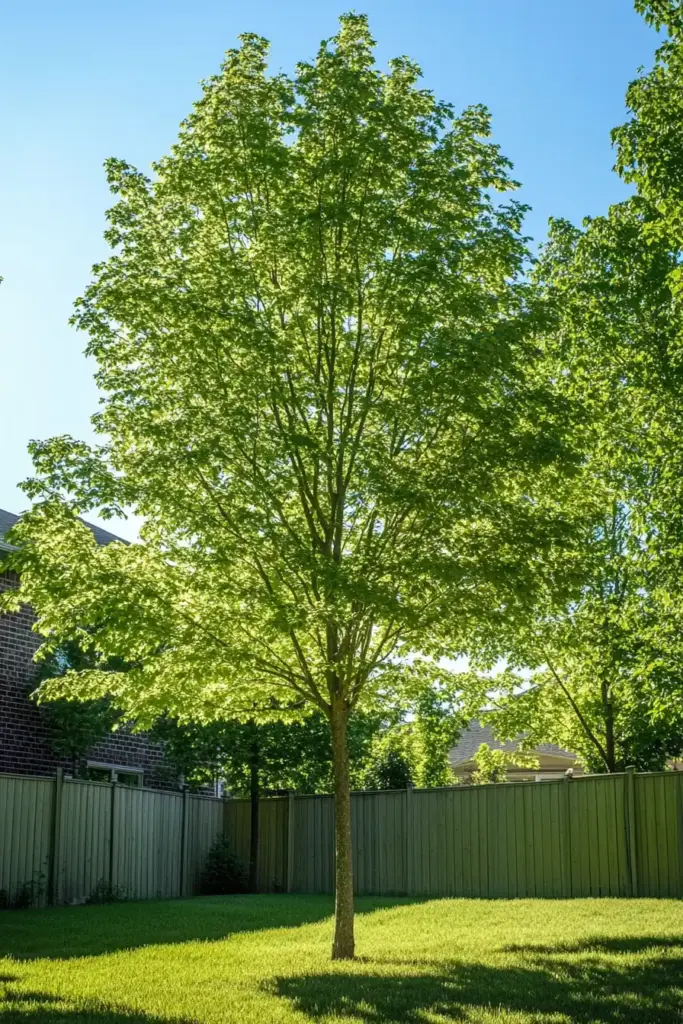
Growth Rate: 5–8 feet/year
Why It Works:
Need coverage in a hurry? Hybrid poplar is one of the fastest-growing trees available, ideal for temporary screening while slower options mature.
- Can reach 40 feet tall in just a few years
- Best used as a short-term solution
- Not ideal for planting near pipes or foundations
7. Silver Maple
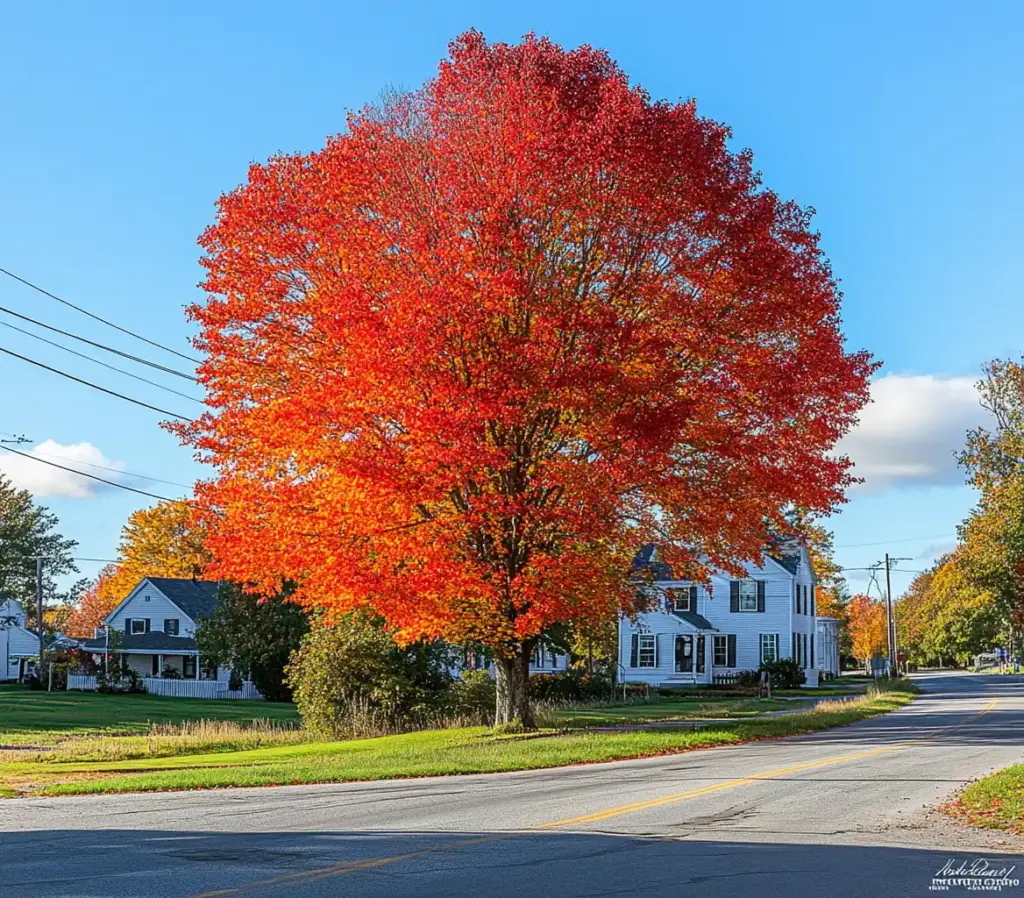
Growth Rate: 2–3 feet/year
Why It Works:
This large shade tree offers excellent overhead privacy. Its broad canopy quickly fills in gaps between houses or tall fences.
- Dramatic fall color
- Spreads quickly—needs plenty of space
- Best planted at a distance from structures
8. Tulip Tree
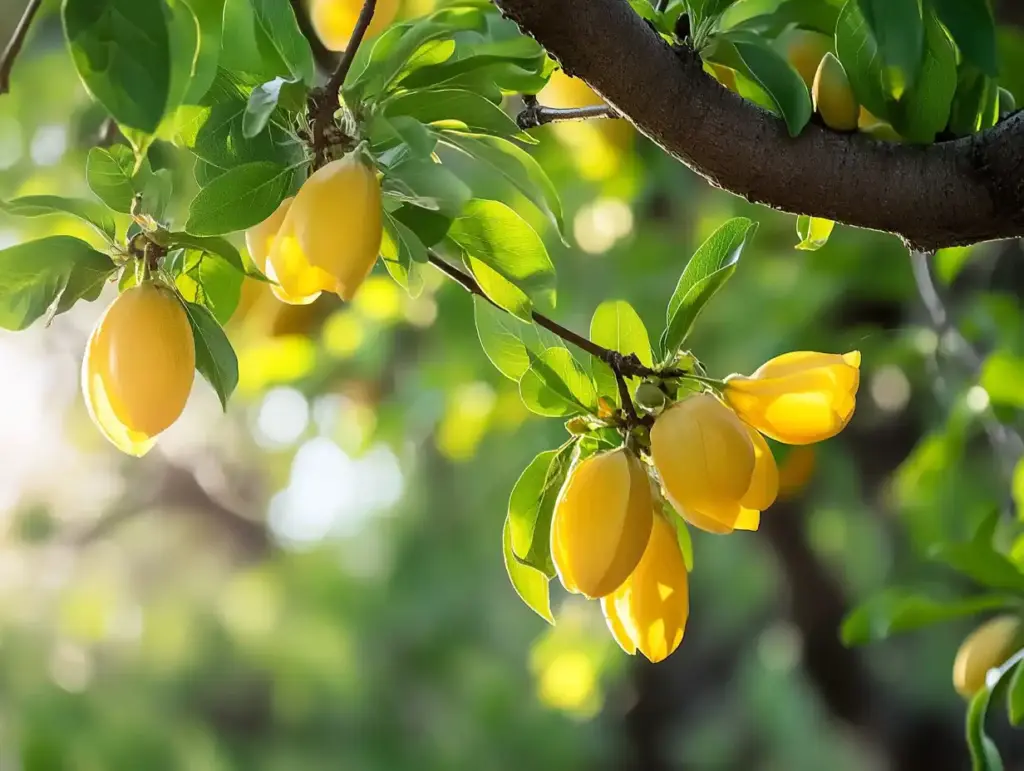
Growth Rate: 2–3 feet/year
Why It Works:
A vertical grower with striking spring blooms, the Tulip Tree is both a privacy solution and a landscaping feature.
- Adds ornamental value
- Upright shape suits narrow spaces
- Attracts pollinators like bees and hummingbirds
9. Willow Hybrid
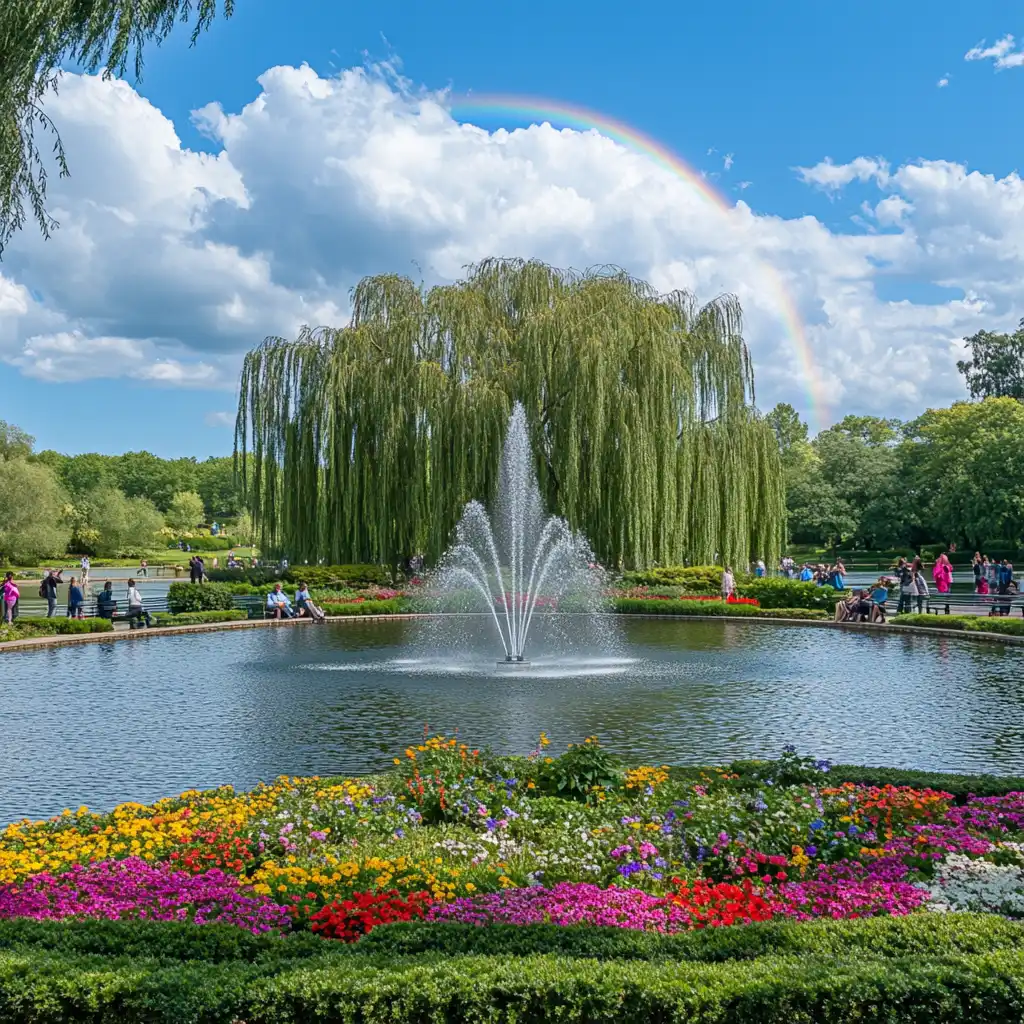
Growth Rate: 6–10 feet/year
Why It Works:
Among the fastest growers on this list, Willow Hybrids are excellent for screening large areas—just be sure they have access to water.
- Creates a tall, dense screen in just 2 years
- Thrives in wet soils
- Excellent for windbreaks too
10. Dawn Redwood
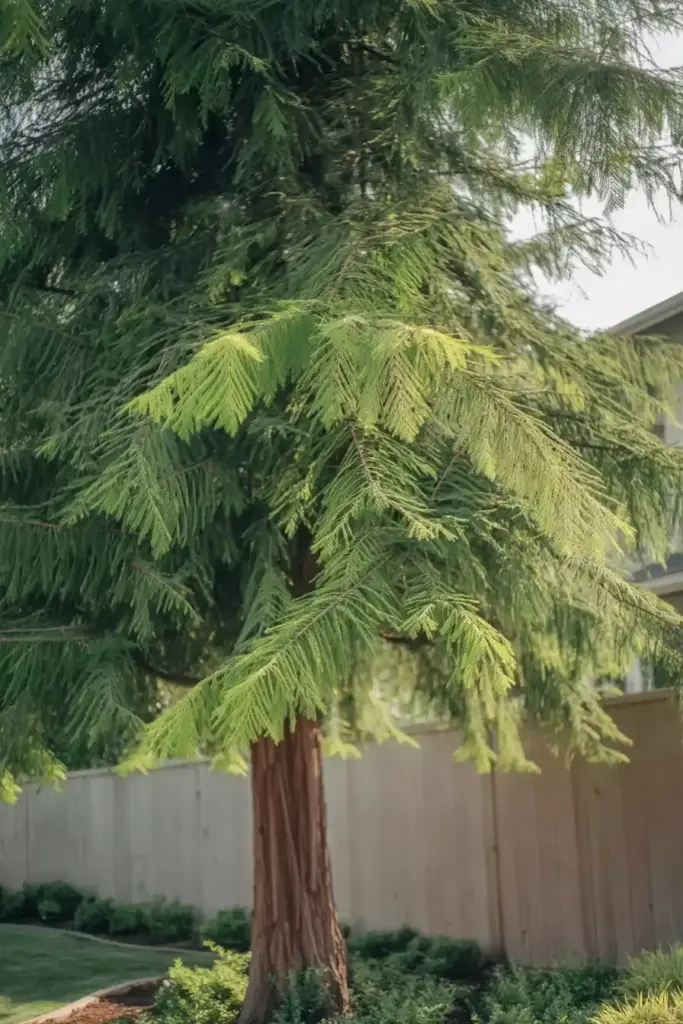
Growth Rate: 3–5 feet/year
Why It Works:
This ancient species has soft, feather-like foliage and makes a graceful privacy screen. It’s deciduous but grows so quickly it still provides strong coverage.
- Unique texture and shape
- Sheds needles in winter
- Good choice for larger yards
11. River Birch
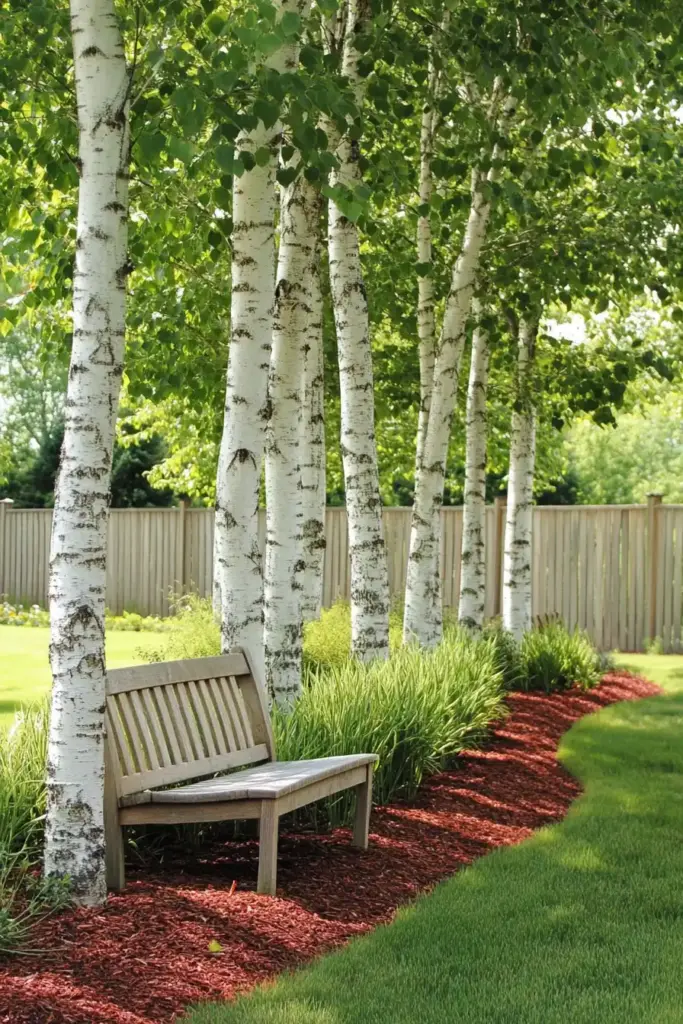
Growth Rate: 2–3 feet/year
Why It Works:
With its beautiful peeling bark and love of moisture, River Birch provides quick growth and plenty of character.
- Excellent for damp or low-lying areas
- Resistant to most pests and diseases
- Can be planted as single or multi-trunk
12. Cold-Hardy Eucalyptus
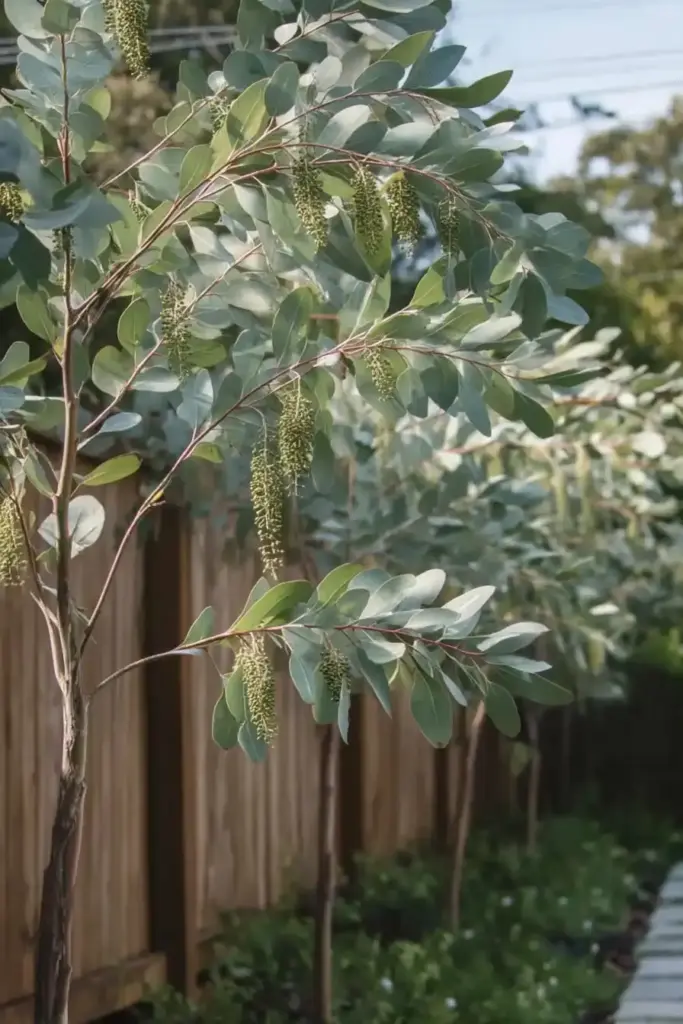
Growth Rate: 6+ feet/year
Why It Works:
Fast and fragrant, this eucalyptus variety works well in mild to moderate climates. Its silvery foliage adds a distinctive look.
- Very rapid grower
- Choose a cold-tolerant cultivar
- Aromatic and ornamental
13. Italian Cypress
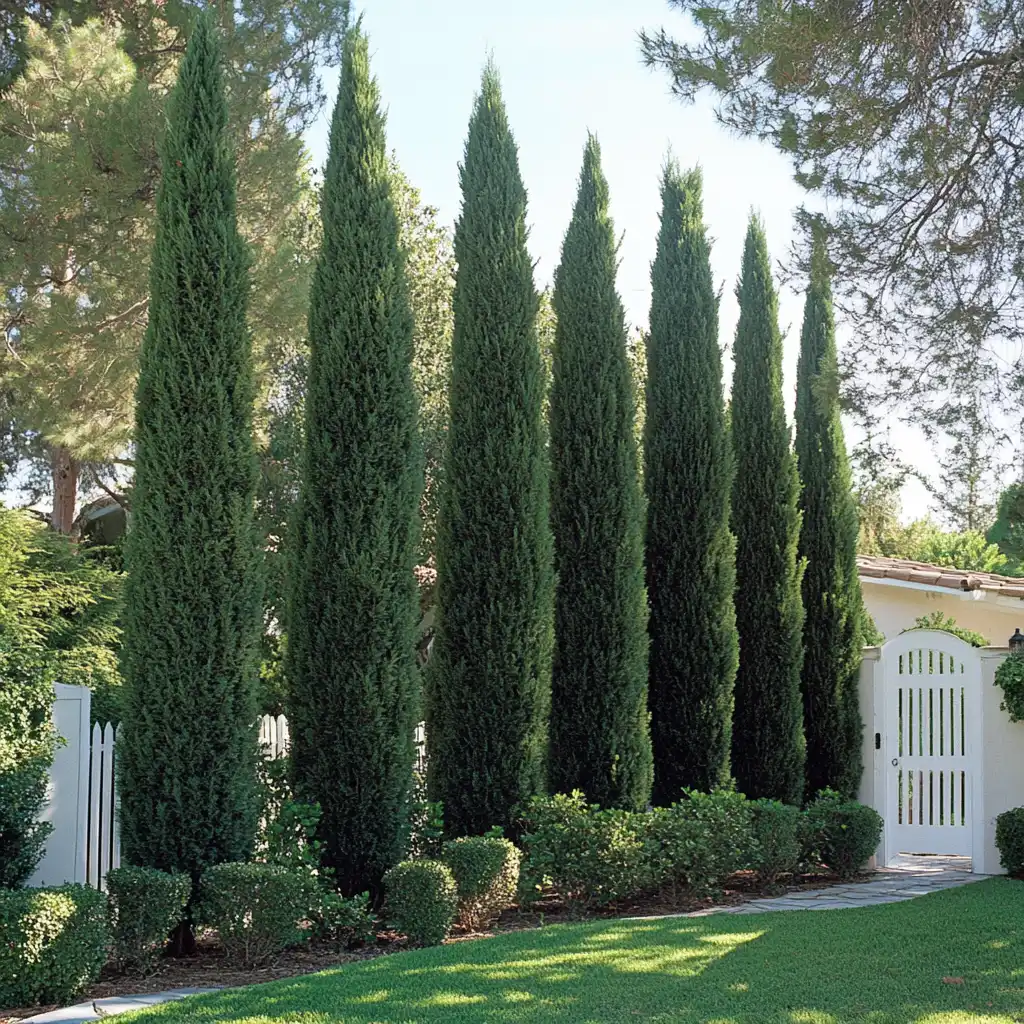
Growth Rate: 2–3 feet/year
Why It Works:
These tall, narrow trees are ideal privacy trees along a fence when space is at a premium. Plus, they lend a classic Mediterranean charm.
- Excellent for lining driveways or fences
- Naturally vertical shape
- Requires full sun
14. Red Maple
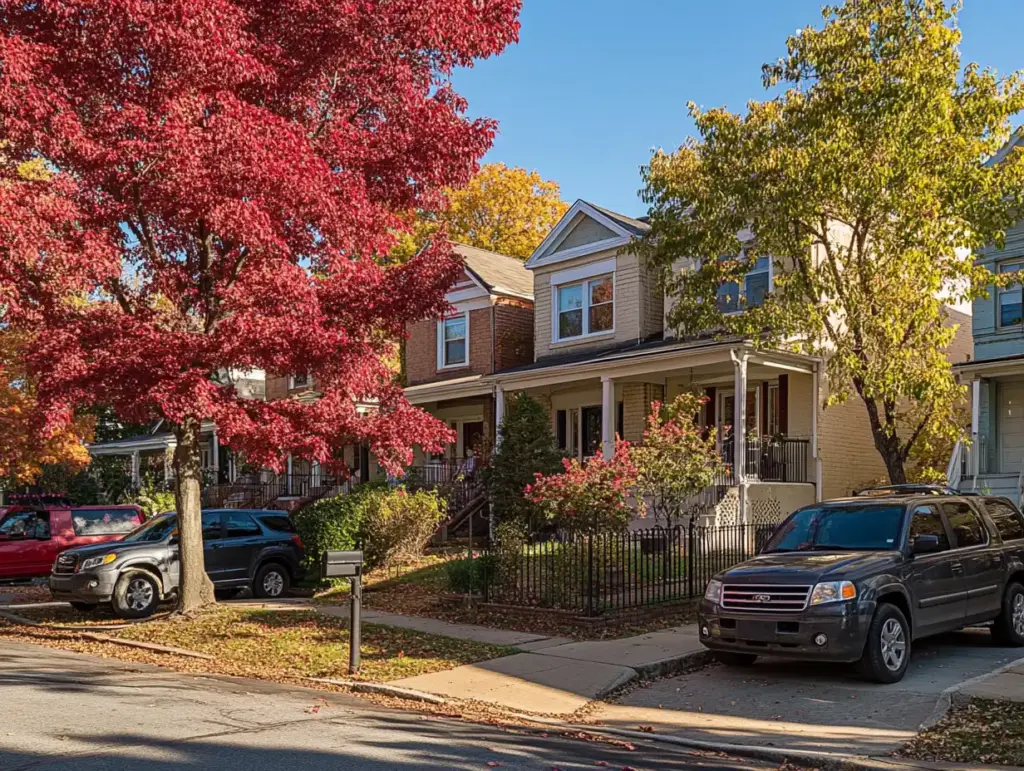
Growth Rate: 2–3 feet/year
Why It Works:
Fast-growing and long-lived, the Red Maple offers stunning fall color and consistent privacy from above.
- Durable and weather-resistant
- Needs space for roots to spread
- Works well in various soil types
15. Cryptomeria ‘Radicans’
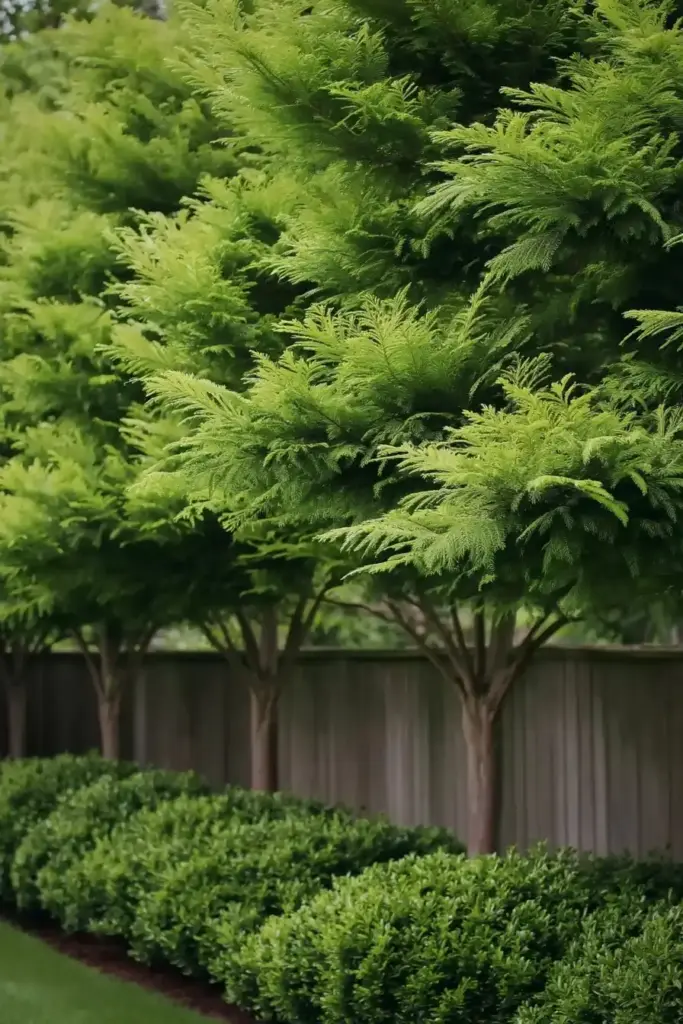
Growth Rate: 3–4 feet/year
Why It Works:
Soft, lush, and evergreen, this lesser-known tree thrives in many conditions and grows quickly without becoming overwhelming.
- Excellent texture and color
- Dense growth for full privacy
- Tolerates heat and humidity
Tips for Choosing the Right Privacy Trees Along Your Fence
Planting privacy trees along a fence isn’t a one-size-fits-all project. Choosing the right tree involves thinking about your space, your timeline, and your local conditions. Here are some expert tips to help you get it right the first time:
🪴 1. Match the Tree to Your Space
Before planting, consider the mature height and width of each tree. A fast-growing giant like Leyland Cypress may be overkill for a small side yard, while compact trees like Emerald Green Arborvitae are ideal for tighter suburban spaces.
- Think vertical for narrow side yards
- Check how close you can plant near foundations or utility lines
- Ensure there’s enough clearance from the fence for root and branch growth
💧 2. Water Early, Especially in the First Year
Even drought-tolerant trees need consistent watering while they’re getting established. Deep, infrequent watering helps roots grow strong and deep—key for long-term growth and stability.
- Install a drip line or soaker hose for efficiency
- Mulch around the base to retain moisture and suppress weeds
- Avoid overwatering or letting water pool
🌳 3. Mix Fast and Slow Growers for Long-Term Coverage
Some trees shoot up fast but don’t live as long. For lasting privacy, combine quick-growers like Hybrid Poplar with longer-lived trees like Red Maple or River Birch. That way, your screen will mature in stages and stay full over the years.
- Layer heights for visual interest
- Use fast trees as “placeholders” while others fill in
- Consider staggered planting to reduce gaps
✂️ 4. Plan for Ongoing Maintenance
Fast growth means frequent upkeep. Some privacy trees will need annual pruning to keep their shape, height, and density. Others are mostly hands-off—choose what works for your lifestyle.
- Use hedge shears or pole pruners as needed
- Prune in late winter or early spring for most evergreens
- Keep lower branches trimmed if planting near walkways
📍 5. Check with Your Local Nursery or Extension Office
Local experts know your climate best. Some tree varieties may struggle in your region’s soil, humidity, or temperature swings. A quick chat with your nursery can save you money and frustration.
- Ask about native or regionally adapted trees
- Inquire about pests and diseases common to your area
- Choose varieties that support local wildlife
Frequently Asked Questions
🌳 What are the best fast-growing privacy trees along a fence?
Some of the best fast-growing privacy trees for fence lines include Leyland Cypress, Thuja ‘Green Giant’, Willow Hybrid, and Clumping Bamboo. These options provide dense coverage quickly and are ideal for blocking views from neighboring properties.
🌱 How far apart should I plant privacy trees along a fence?
Plant spacing depends heavily on the tree species you choose and how quickly you want coverage. For tall, dense evergreens like Leyland Cypress or Thuja ‘Green Giant’, spacing them 5 to 8 feet apart allows their foliage to merge into a solid screen. Narrow varieties such as Italian Cypress can be planted closer—about 3 to 4 feet apart—to form a slim hedge. For larger shade trees like Silver Maple, which have extensive root systems and wide canopies, spacing of 12 to 15 feet (or more) is recommended.
If you’re building out your garden design around privacy planting, you might also enjoy our creative flower bed ideas for front yards or learn how to improve garden soil to give your new trees the healthiest possible start.
💧 Do privacy trees need a lot of maintenance?
Not necessarily! Many popular privacy trees along fence lines, like Arborvitae ‘Emerald Green’ or Eastern Red Cedar, are known for being low-maintenance once established. That said, faster growers such as Willow Hybrid or Hybrid Poplar may require annual pruning to control their size and shape. All new plantings—especially in the first year—should receive deep, consistent watering to establish strong roots.
For a fully low-maintenance garden, explore our expert perennial care guide and our list of easy-care trees for the front yard that pair well with privacy hedging.
❄️ What privacy trees grow well in cold climates?
If you live in a cooler zone, you’ll want to choose cold-hardy trees that can withstand frost, snow, and icy winds. Great options include Eastern Red Cedar, Red Maple, and River Birch, which are native to many northern regions. Even Cold-Hardy Eucalyptus can work well in milder Zone 7 climates and above.
Not sure how to select plants for your climate? Our article on drought-tolerant shrubs can help you understand plant adaptability across zones. You might also like our guide to shielding your plants from winter chill.
🐾 Are privacy trees safe for pets and kids?
Most privacy trees used in suburban landscaping are considered safe for families, but it’s smart to double-check specific varieties. Arborvitae, Clumping Bamboo, and Cryptomeria are generally non-toxic to pets and kids. On the other hand, some types of Eucalyptus and Red Maple leaves can be harmful—especially to horses or small pets if ingested in large amounts.
For more pet-safe gardening ideas, consider planting natural pest-repelling plants from our mosquito-repellent plant guide, which often pull double-duty as safe, useful additions to family-friendly landscapes.
🏡 Can I use privacy trees instead of a fence?
Absolutely! Planting privacy trees along fence lines or property boundaries is not only a beautiful alternative to traditional fencing, but it’s often more budget-friendly over time. Trees provide natural screening, shade, sound insulation, and even improve biodiversity by attracting pollinators and birds.
If you’re rethinking your entire yard layout, our ideas for cheap backyard renovations and small yard landscaping upgrades can help you build a private and peaceful space without breaking the bank.
author:Final Thoughts on Fast-Growing Privacy Trees
Adding privacy trees along a fence is one of the most natural, cost-effective, and rewarding ways to carve out personal space in your backyard. Whether you’re aiming to block the view from a neighboring window, shield a sunny patio, or craft a lush, living backdrop for your garden, the right tree choice can completely transform your landscape. These trees offer a softer, more organic alternative to fences—plus, they contribute shade, sound buffering, and habitat for birds and pollinators.
From towering willows perfect for large properties to narrow evergreen varieties suited for smaller yards, there’s a fast-growing privacy tree for nearly every garden style. If you’re pairing your trees with a colorful flower border, check out our guide to long-blooming perennials that thrive alongside trees. Or, for a low-maintenance landscape, explore our tips for full-sun perennials that provide texture and seasonal interest.
Planning ahead is essential. Be sure to select trees that match your climate zone and available space, and don’t overlook the importance of early care—deep watering, mulching, and pruning in the first year can make or break your long-term success. With a bit of forethought and a dash of patience, you’ll be rewarded with a natural privacy screen that brings beauty, tranquility, and real value to your outdoor space.
🌿 Love gardening inspiration? Follow me on Pinterest for bold plant ideas, tips, and seasonal color!
More Posts
